479 have author last names that start with R have author last names that start with R



This book presents an in-depth exploration of the administration of justice during Islam’s founding period, 632–1250 CE. Inspired by the scholarship of Roy Parviz Mottahedeh and composed in his honor, this volume brings together ten leading scholars of Islamic law to examine the history of early Islamic courts. This approach draws attention to both how and why the courts and the people associated with them functioned in early Islamic societies: When a dispute occurred, what happened in the courts? How did judges conceive of justice and their role in it? When and how did they give attention to politics and procedure?
Each author draws on diverse sources that illuminate a broader and deeper vision of law and society than traditional legal literature alone can provide, including historical chronicles, biographical dictionaries, legal canons, exegetical works, and mirrors for princes. Altogether, the volume offers both a substantive intervention on early Islamic courts and on methods for studying legal history as social history. It illuminates the varied and dynamic legal landscapes stretching across early Islam, and maps new approaches to interdisciplinary legal history.

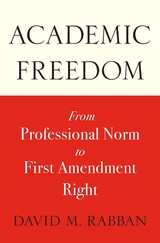
A definitive interpretation of academic freedom as a First Amendment right, drawing on a comprehensive survey of legal cases.
Is academic freedom a First Amendment right? Many think so, yet its relationship to free speech as guaranteed by the Constitution is anything but straightforward. David Rabban examines the extensive case law addressing academic freedom and free speech at American universities, developing a robust theory of academic freedom as a distinctive subset of First Amendment law.
In subsuming academic freedom under the First Amendment, Rabban emphasizes the societal value of the contribution to knowledge made by the expert speech of professors, the classic justification for academic freedom in the influential 1915 Declaration of the American Association of University Professors (AAUP). Any indication that professors might be disciplined because people without academic training disagree with their scholarly views would undermine confidence in the integrity of their work and therefore their ability to perform this vital function on behalf of the public. Rabban argues that academic freedom fosters two central First Amendment values recognized by courts in a wide range of contexts: the production and dissemination of knowledge and the contribution of free expression to democratic citizenship.
The First Amendment right of academic freedom applies most directly to professors, but it also plausibly extends to the educational decisions of universities and to students’ learning interests. More broadly, this vision of academic freedom can guide in developing additional distinctive First Amendment rights to protect the expert expression of journalists, librarians, museum curators, and other professionals. At a time when academic freedom is under attack from many directions, Academic Freedom proposes a theoretically satisfying and practically useful guide to its meaning as a First Amendment right.

During the closing decades of the nineteenth century, approximately two dozen Protestant mission societies, which since 1812 had been sending Americans abroad to evangelize non-Christians, coordinated their enterprise and expanded their operations with unprecedented urgency and efficiency. Ambitious innovations characterized the work in traditional and new foreign mission fields, but the most radical changes occurred in the institutionalization of what contemporaries referred to as the home base of the mission movement.
Valentin Rabe focuses on the recruitment of personnel, fundraising, administration, promotional propaganda, and other logistical problems faced by the agencies in the United States. When generalizations concerning the American base require demonstration or references to the field of operations, China—the country in which American missionaries applied the greatest proportion of the movement's resources by the 1920s—is used as the primary illustration.
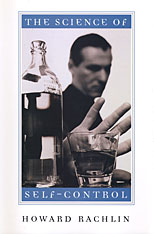
This book proposes a new science of self-control based on the principles of behavioral psychology and economics. Claiming that insight and self-knowledge are insufficient for controlling one's behavior, Howard Rachlin argues that the only way to achieve such control--and ultimately happiness--is through the development of harmonious patterns of behavior.
Most personal problems with self-control arise because people have difficulty delaying immediate gratification for a better future reward. The alcoholic prefers to drink now. If she is feeling good, a drink will make her feel better. If she is feeling bad, a drink will make her feel better. The problem is that drinking will eventually make her feel worse. This sequence--the consistent choice of a highly valued particular act (such as having a drink or a smoke) that leads to a low-valued pattern of acts--is called "the primrose path."
To avoid it, the author presents a strategy of "soft commitment," consisting of the development of valuable patterns of behavior that bridge over individual temptations. He also proposes, from economics, the concept of the substitutability of "positive addictions," such as social activity or exercise, for "negative addictions," such as drug abuse or overeating.
Self-control may be seen as the interaction with one's own future self. Howard Rachlin shows that indeed the value of the whole--of one's whole life--is far greater than the sum of the values of its individual parts.

Most critics agree that Euripidean tragedy addresses a wealth of political questions, and that it successfully incorporates and engages with a variety of ancient Greek poetic traditions. Nevertheless, these topics and questions have generally been treated separately. In this book, Jonah Radding contends that the political issues addressed in Euripides’ tragedies are inextricably related to his employment of choral lyric genres such as paean and epinician, and to his engagement with canonical poetic texts such as the Iliad and Aeschylus’ Agamemnon.
We see that Euripides consistently recasts traditional poetic genres and texts in order to dramatize and illuminate political questions that are central to his tragedies. At the same time, Radding suggests that the dramatic politicization of the poetic tradition also serves to question the manner in which ancient Athenians understood and utilized these various poetic forms in their own polis. Ultimately, we see that the relationship between poetry and politics in Euripidean tragedy is truly reciprocal, for both aspects illuminate—and are illuminated by—the other, each becoming a more powerful force in the process.
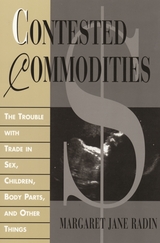
Not only are there willing buyers for body parts or babies, Radin observes, but some desperately poor people would be willing sellers, while better-off people find such trades abhorrent. Radin observes that many such areas of contested commodification reflect a persistent dilemma in liberal society: we value freedom of choice and simultaneously believe that choices ought to be restricted to protect the integrity of what it means to be a person. She views this tension as primarily the result of underlying social and economic inequality, which need not reflect an irreconcilable conflict in the premises of liberal democracy.
As a philosophical pragmatist, the author therefore argues for a conception of incomplete commodification, in which some contested things can be bought and sold, but only under carefully regulated circumstances. Such a regulatory regime both symbolizes the importance of nonmarket value to personhood and aspires to ameliorate the underlying conditions of inequality.

Equality has always been the most powerful political idea in America, and it is becoming the most powerful idea in the world. Observers from Alexis de Tocqueville to the most recent social critics have commented upon the idea's great force. Yet, for all its influence upon popular ideology, the idea of equality becomes a bundle of contradictory impulses once it is applied to public policy and social institutions. As the title of this lively book suggests, equality becomes equalities.
Once inequality is established, there is a deep difference between equal policies and policies that lead to equality. Once people have different needs, there is a sharp difference between treating them equally and treating them in ways that serve them equally. Once people have unequal (or unequally developed) talents, then equal opportunity cannot mean both equal opportunity and an equal prospect of success. Once society is cleaved by differences of race, sex, income, and so on, there is an intense difference between policies and reforms that reduce racial, sexual, and economic inequality and policies that diminish equality among persons. Douglas Rae and his colleagues develop an ingenious “grammar of equality” to explain and explicate the main ways in which equality turns into equalities as it passes from the realm of ideas to the realm of practice.
The book's exciting new method of analysis, based on logic and theories of political economy and political science, is a valuable contribution. Equalities helps us answer such questions as: “Is equality possible?” “How, after so long a period of ostensible egalitarianism, can inequality still dominate so much of the social landscape?” The responses are bound to stir controversy among all those interested in political theory or in social policy or in the attainment of equality.
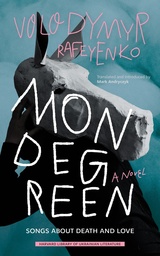
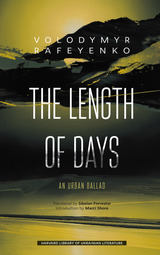
The Length of Days: An Urban Ballad is set mostly in the composite Donbas city of Z—an uncanny foretelling of what this letter has come to symbolize since February 24, 2022, when Russia launched a full-scale invasion of Ukraine. Several embedded narratives attributed to an alcoholic chemist-turned-massage therapist give insight into the funny, ironic, or tragic lives of people who remained in the occupied Donbas after Russia’s initial aggression in 2014.
With elements of magical realism, Volodymyr Rafeyenko’s novel combines a wicked sense of humor with political analysis, philosophy, poetry, and moral interrogation. Witty references to popular culture—Ukrainian and European—underline the international and transnational aspects of Ukrainian literature. The novel ends on the hopeful note that even death cannot have the final word: the resilient inhabitants of Z grow in power through reincarnation.
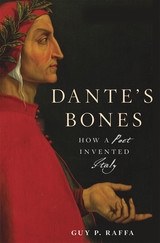
A richly detailed graveyard history of the Florentine poet whose dead body shaped Italy from the Middle Ages and the Renaissance to the Risorgimento, World War I, and Mussolini’s fascist dictatorship.
Dante, whose Divine Comedy gave the world its most vividly imagined story of the afterlife, endured an extraordinary afterlife of his own. Exiled in death as in life, the Florentine poet has hardly rested in peace over the centuries. Like a saint’s relics, his bones have been stolen, recovered, reburied, exhumed, examined, and, above all, worshiped. Actors in this graveyard history range from Lorenzo de’ Medici, Michelangelo, and Pope Leo X to the Franciscan friar who hid the bones, the stone mason who accidentally discovered them, and the opportunistic sculptor who accomplished what princes, popes, and politicians could not: delivering to Florence a precious relic of the native son it had banished.
In Dante’s Bones, Guy Raffa narrates for the first time the complete course of the poet’s hereafter, from his death and burial in Ravenna in 1321 to a computer-generated reconstruction of his face in 2006. Dante’s posthumous adventures are inextricably tied to major historical events in Italy and its relationship to the wider world. Dante grew in stature as the contested portion of his body diminished in size from skeleton to bones, fragments, and finally dust: During the Renaissance, a political and literary hero in Florence; in the nineteenth century, the ancestral father and prophet of Italy; a nationalist symbol under fascism and amid two world wars; and finally the global icon we know today.

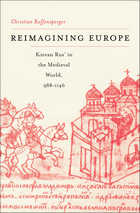
An overriding assumption has long directed scholarship in both European and Slavic history: that Kievan Rus' in the tenth through twelfth centuries was part of a Byzantine commonwealth separate from Europe. Christian Raffensperger refutes this conception and offers a new frame for two hundred years of history, one in which Rus' is understood as part of medieval Europe and East is not so neatly divided from West.
With the aid of Latin sources, the author brings to light the considerable political, religious, marital, and economic ties among European kingdoms, including Rus', restoring a historical record rendered blank by Russian monastic chroniclers as well as modern scholars ideologically motivated to build barriers between East and West. Further, Raffensperger revises the concept of a Byzantine commonwealth that stood in opposition to Europe-and under which Rus' was subsumed-toward that of a Byzantine Ideal esteemed and emulated by all the states of Europe. In this new context, appropriation of Byzantine customs, law, coinage, art, and architecture in both Rus' and Europe can be understood as an attempt to gain legitimacy and prestige by association with the surviving remnant of the Roman Empire. Reimagining Europe initiates an expansion of history that is sure to challenge ideas of Russian exceptionalism and influence the course of European medieval studies.

The warp and weft of political and social relationships among the medieval elite were formed by marriages made between royal families. Ties of Kinship establishes a new standard for tracking the dynastic marriages of the ruling family of Rus´—the descendants of Volodimer (Volodimeroviči). Utilizing a modern scholarly approach and a broad range of primary sources from inside and outside Rus´, Christian Raffensperger has created a fully realized picture of the Volodimeroviči from the tenth through the twelfth centuries and the first comprehensive, scholarly treatment of the subject in English.
Alongside more than twenty-two genealogical charts with accompanying bibliographic information, this work presents an analysis of the Volodimeroviči dynastic marriages with modern interpretations and historical contextualization that highlights the importance of Rus´ in a medieval European framework. This study will be used by Slavists, Byzantinists, and West European medievalists as the new baseline for research on the Volodimeroviči and their complex web of relationships with the world beyond.

What happens when historiography—the way historical events are committed to writing—shapes historical events as they occur? How do we read biography when it is truly “life-writing,” its subjects fully engaged with the historiographical rhetoric that would record their words and deeds?
The Threshold, a study of the culture of historiography in early medieval China, explores these questions through the lens of the History of Liu-Song, a dynastic history compiled in 488 and covering the first three-quarters of the fifth century. Rhetoric courses through early medieval historiography: from the way a historian framed history for readers to the political machinations contained within historical narratives, from the active use of rhetorical techniques to the passive effect that embedded discourses exercised on historian, historical actor, and reader alike. Tracing these varied strands of historical argumentation, Zeb Raft shows how history was constructed through rhetorical elements including the narration of officialdom, the anecdote, and, above all, the historical document. The portrait that emerges is of an epideictic historiography where praise was mixed with irony and achievement diluted with ambivalence—and where the most secure positions lay on the threshold of political power and historical interpretation.
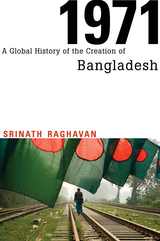
The war of 1971 was the most significant geopolitical event in the Indian subcontinent since its partition in 1947. At one swoop, it led to the creation of Bangladesh, and it tilted the balance of power between India and Pakistan steeply in favor of India. The Line of Control in Kashmir, the nuclearization of India and Pakistan, the conflicts in Siachen Glacier and Kargil, the insurgency in Kashmir, the political travails of Bangladesh—all can be traced back to the intense nine months in 1971.
Against the grain of received wisdom, Srinath Raghavan contends that far from being a predestined event, the creation of Bangladesh was the product of conjuncture and contingency, choice and chance. The breakup of Pakistan and the emergence of Bangladesh can be understood only in a wider international context of the period: decolonization, the Cold War, and incipient globalization. In a narrative populated by the likes of Nixon, Kissinger, Zhou Enlai, Indira Gandhi, Zulfikar Ali Bhutto, Sheikh Mujibur Rahman, Tariq Ali, George Harrison, Ravi Shankar, and Bob Dylan, Raghavan vividly portrays the stellar international cast that shaped the origins and outcome of the Bangladesh crisis.
This strikingly original history uses the example of 1971 to open a window to the nature of international humanitarian crises, their management, and their unintended outcomes.

This edition is based on new manuscripts of this important treatise on classical Sanskrit poetics. It was composed by the famous eleventh-century King Bhoja of Malwa (West India), a patron of traditional learning.
The text has never received a complete critical edition. It is important not only because of the theoretical treatment of the erotic sentiment (śṛṅgāra) in classical Sanskrit texts. It is also a mine of quotations from extant and also from lost Sanskrit and Prakrit poetical texts.

This edition is based on new manuscripts of this important treatise on classical Sanskrit poetics. It was composed by the famous eleventh-century King Bhoja of Malwa (West India), a patron of traditional learning.
The text has never received a complete critical edition. It is important not only because of the theoretical treatment of the erotic sentiment (śṛṅgāra) in classical Sanskrit texts. It is also a mine of quotations from extant and also from lost Sanskrit and Prakrit poetical texts.


A thirteenth-century adaptation of one of ancient India’s most enduring stories, a cornerstone of the Kannada literary canon, translated for the first time into English.
The Life of Harishchandra, Raghavanka’s thirteenth-century masterpiece, is the first poetic rendering of one of ancient India’s most enduring legends. When his commitment to truth is tested by a powerful sage, King Harishchandra suffers utter deprivation—the loss of his wife and son, his citizens and power, and, dearest of all, his caste status—but refuses to yield. The tale has influenced poets and readers through the ages. Mahatma Gandhi traced his own commitment to truth to the impact of a Harishchandra play seen in childhood.
A poet from northern Karnataka trained in the twin traditions of Sanskrit and Kannada, Raghavanka negotiates a unique space for himself in the Kannada literary canon through important thematic, formal, and stylistic innovations. The conflicts he addresses—of hierarchical social order, political power, caste, and gender—are as relevant to contemporary India as to his own times.
Accompanied by the original text in the Kannada script, this spirited translation, the first into any language, brings an elegant and energetic narrative to a global readership.
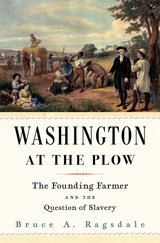
Winner of the George Washington Prize
A fresh, original look at George Washington as an innovative land manager whose singular passion for farming would unexpectedly lead him to reject slavery.
George Washington spent more of his working life farming than he did at war or in political office. For over forty years, he devoted himself to the improvement of agriculture, which he saw as the means by which the American people would attain the “respectability & importance which we ought to hold in the world.”
Washington at the Plow depicts the “first farmer of America” as a leading practitioner of the New Husbandry, a transatlantic movement that spearheaded advancements in crop rotation. A tireless experimentalist, Washington pulled up his tobacco and switched to wheat production, leading the way for the rest of the country. He filled his library with the latest agricultural treatises and pioneered land-management techniques that he hoped would guide small farmers, strengthen agrarian society, and ensure the prosperity of the nation.
Slavery was a key part of Washington’s pursuits. He saw enslaved field workers and artisans as means of agricultural development and tried repeatedly to adapt slave labor to new kinds of farming. To this end, he devised an original and exacting system of slave supervision. But Washington eventually found that forced labor could not achieve the productivity he desired. His inability to reconcile ideals of scientific farming and rural order with race-based slavery led him to reconsider the traditional foundations of the Virginia plantation. As Bruce Ragsdale shows, it was the inefficacy of chattel slavery, as much as moral revulsion at the practice, that informed Washington’s famous decision to free his slaves after his death.
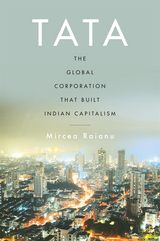
An eye-opening portrait of global capitalism spanning 150 years, told through the history of the Tata corporation.
Nearly a century old, the grand façade of Bombay House is hard to miss in the historic business district of Mumbai. This is the iconic global headquarters of the Tata Group, a multinational corporation that produces everything from salt to software. After getting their start in the cotton and opium trades, the Tatas, a Parsi family from Navsari, Gujarat, ascended to commanding heights in the Indian economy by the time of independence in 1947. Over the course of its 150-year history Tata spun textiles, forged steel, generated hydroelectric power, and took to the skies. It also faced challenges from restive workers fighting for their rights and political leaders who sought to curb its power.
In this sweeping history, Mircea Raianu tracks the fortunes of a family-run business that was born during the high noon of the British Empire and went on to capture the world’s attention with the headline-making acquisition of luxury car manufacturer Jaguar Land Rover. The growth of Tata was a complex process shaped by world historical forces: the eclipse of imperial free trade, the intertwined rise of nationalism and the developmental state, and finally the return of globalization and market liberalization. Today Tata is the leading light of one of the world’s major economies, selling steel, chemicals, food, financial services, and nearly everything else, while operating philanthropic institutions that channel expert knowledge in fields such as engineering and medicine.
Based on painstaking research in the company’s archive, Tata elucidates how a titan of industry was created and what lessons its story may hold for the future of global capitalism.
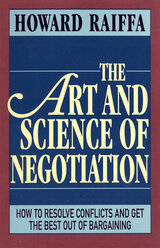
Whether you are selling a house, closing a business deal, settling a divorce, arbitrating a labor dispute, or trying to hammer out an international treaty, Howard Raiffa’s new book will measurably improve your negotiating skills.
Although it is a sophisticated self-help book—directed to the lawyer, labor arbitrator, business executive, college dean, diplomat—it is not cynical or Machiavellian: Raiffa emphasizes problems and situations where, with the kinds of skills he aims to develop, disputants can achieve results that are beneficial to all parties concerned. Indeed, he argues that the popular “zero-sum” way of thinking, according to which one side must lose if the other wins, often makes both sides worse off than they would be when bargaining for joint mutual gains.
Using a vast array of specific cases and clear, helpful diagrams, Raiffa not only elucidates the step-by-step processes of negotiation but also translates this deeper understanding into practical guidelines for negotiators and “intervenors.” He examines the mechanics of negotiation in imaginative fashion, drawing on his extensive background in game theory and decision analysis, on his quarter-century of teaching nonspecialists in schools of business and public policy, on his personal experiences as director of an international institute dealing with East/West problems, and on the results of simulated negotiation exercises with hundreds of participants.
There are popular books on the art of winning and scholarly books on the science of negotiation, but this is the first book to bridge the two currents. Shrewd, accessible, and engagingly written, it shows how a little analysis sprinkled with a touch of art can work to the advantage of any negotiator.
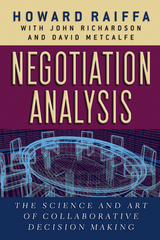
This masterly book substantially extends Howard Raiffa's earlier classic, The Art and Science of Negotiation. It does so by incorporating three additional supporting strands of inquiry: individual decision analysis, judgmental decision making, and game theory. Each strand is introduced and used in analyzing negotiations.
The book starts by considering how analytically minded parties can generate joint gains and distribute them equitably by negotiating with full, open, truthful exchanges. The book then examines models that disengage step by step from that ideal. It also shows how a neutral outsider (intervenor) can help all negotiators by providing joint, neutral analysis of their problem.
Although analytical in its approach--building from simple hypothetical examples--the book can be understood by those with only a high school background in mathematics. It therefore will have a broad relevance for both the theory and practice of negotiation analysis as it is applied to disputes that range from those between family members, business partners, and business competitors to those involving labor and management, environmentalists and developers, and nations.
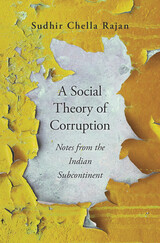
A social theory of grand corruption from antiquity to the twenty-first century.
In contemporary policy discourse, the notion of corruption is highly constricted, understood just as the pursuit of private gain while fulfilling a public duty. Its paradigmatic manifestations are bribery and extortion, placing the onus on individuals, typically bureaucrats. Sudhir Chella Rajan argues that this understanding ignores the true depths of corruption, which is properly seen as a foundation of social structures. Not just bribes but also caste, gender relations, and the reproduction of class are forms of corruption.
Using South Asia as a case study, Rajan argues that syndromes of corruption can be identified by paying attention to social orders and the elites they support. From the breakup of the Harappan civilization in the second millennium BCE to the anticolonial movement in the late nineteenth and early twentieth centuries, elites and their descendants made off with substantial material and symbolic gains for hundreds of years before their schemes unraveled.
Rajan makes clear that this grander form of corruption is not limited to India or the annals of global history. Societal corruption is endemic, as tax cheats and complicit bankers squirrel away public money in offshore accounts, corporate titans buy political influence, and the rich ensure that their children live lavishly no matter how little they contribute. These elites use their privileged access to power to fix the rules of the game—legal structures and social norms—benefiting themselves, even while most ordinary people remain faithful to the rubrics of everyday life.
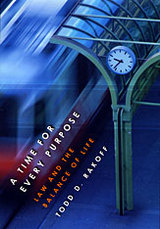
Who organizes our time? Who decides when we must be at work and at school, when we set back our clocks, and when retail stores will close? Todd Rakoff traces the law's effect on our use of time and discovers that the structure of our time is gradually changing. As Rakoff demonstrates, the law's influence is subtle, and so ubiquitous that we barely notice it. But its structure establishes the terms by which society allocates its efforts, coordinates its many players, establishes the rhythms of life, and indeed gives meaning to the time in which we live. Compulsory education law, overtime law, daylight-saving law, and Blue Laws are among the many rules government uses to shape our use of time.
More and more, however, society, and especially the workplace, has come to see time simply as a quantity whose value must be maximized. As lawmakers struggle to deal with accelerating market demands, the average citizen's ability to organize his or her time to accommodate all of life's activities is diminishing. Meanwhile, it is increasingly hard to differentiate weekdays from weekends, and ordinary days from holidays. The law of time, Rakoff argues, may need refashioning to meet modern circumstances, but we continue to need a stable legal structure of time if we are to attain the ancient goal of a balanced life: "A Time for Every Purpose."
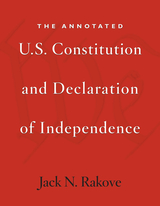
Here in a newly annotated edition are the two founding documents of the United States of America: the Declaration of Independence (1776), our great revolutionary manifesto, and the Constitution (1787–88), in which “We the People” forged a new nation and built the framework for our federal republic. Together with the Bill of Rights and the Civil War amendments, these documents constitute what James Madison called our “political scriptures” and have come to define us as a people. Now a Pulitzer Prize–winning historian serves as a guide to these texts, providing historical contexts and offering interpretive commentary.
In an introductory essay written for the general reader, Jack N. Rakove provides a narrative political account of how these documents came to be written. In his commentary on the Declaration of Independence, Rakove sets the historical context for a fuller appreciation of the important preamble and the list of charges leveled against the Crown. When he glosses the Constitution, the Bill of Rights, and the subsequent amendments, Rakove once again provides helpful historical background, targets language that has proven particularly difficult or controversial, and cites leading Supreme Court cases. A chronology of events provides a framework for understanding the road to Philadelphia. The general reader will not find a better, more helpful guide to our founding documents than Jack N. Rakove.

After the triumphs of Montgomery and Selma, Martin Luther King, Jr., rallied his forces and headed north. The law was on his side, the nation seemed to be behind him, the crusade for civil rights was rapidly gathering momentum—and then, in Chicago, heartland of America, the movement stalled. What happened? This book is the first to give us the full story—a vivid account of how the Chicago Freedom Movement of 1965–1967 attempted to combat northern segregation. Northern Protest captures this new kind of campaign for civil rights at a fateful turning point, with effects that pulse through the nation’s race relations to the day.
Combating the outright, unconstitutional denial of basic political and civil rights had been King’s focus in the South. In the North, the racial terrain was different. James Ralph analyzes the shift in the planning stages—moving from addressing public constitutional rights to private-impact legal rights—as King and his Southern Christian Leadership Conference (SCLC) mounted an unprecedented attack on housing discrimination, one of the most blatant social and economic inequities of urban America. A crisis in the making is unfolded as King, the SCLC, and a coalition of multiracial Chicago civil rights groups mobilize protests against the city’s unfair housing practices. Ralph introduces us to Chicago’s white ethnics, city officials, and business and religious leaders in a heated confusion of responses. His vibrant account, based in part on many in-depth interviews with participants, reveals the true lineaments of urban America, with lessons reaching beyond the confines of the city. The Chicago Freedom Movement is given a national context—as King envisioned it, and as it finally played out. Here, the Chicago crusade becomes emblematic of the civil rights movement today and tomorrow. Ralph argues that this new push for equality in more private realms of American life actually undermined popular support for the movement and led to its ultimate decline.



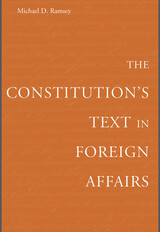
This book describes the constitutional law of foreign affairs, derived from the historical understanding of the Constitution's text. It examines timeless and recurring foreign affairs controversies--such as the role of the president and Congress, the power to enter armed conflict, and the power to make and break treaties--and shows how the words, structure, and context of the Constitution can resolve pivotal court cases and leading modern disputes. The book provides a counterpoint to much conventional discussion of constitutional foreign affairs law, which tends to assume that the Constitution's text and history cannot give much guidance, and which rests many of its arguments upon modern practice and policy considerations.
Using a close focus on the text and a wide array of historical sources, Michael Ramsey argues that the Constitution's original design gives the president substantial independent powers in foreign affairs. But, contrary to what many presidents and presidential advisors contend, these powers are balanced by the independent powers given to Congress, the Senate, the states, and the courts. The Constitution, Ramsey concludes, does not make any branch of government the ultimate decision maker in foreign affairs, but rather divides authority among multiple independent power centers.

Co-published by the John M. Olin Center for Law, Economics, and Business at Harvard Law School and Harvard University Press, the JLA is a faculty-refereed, peer-reviewed publication on law. It aspires to be broad in coverage, including doctrinal legal analysis and interdisciplinary scholarship. JLA articles are free online and available for sale in bound issues.
Volume 1, Issue 1 contains contributions from Adrian Vermeule (Many-Minds Arguments in Legal Theory), Stephen J. Choi, G. Mitu Gulati, and Eric A. Posner (Are Judges Overpaid? A Skeptical Response to the Judicial Salary Debate), James Q. Whitman (Equality in Criminal Law: The Two Divergent Western Roads), Jonathan R. Macey and Geoffrey P. Miller (Judicial Review of Class Action Settlements), Melvin A. Eisenberg (Impossibility, Impracticability, and Frustration), Edward L. Glaeser, Cass R. Sunstein (Extremism and Social Learning), R. H. Helmholz (Bonham's Case, Judicial Review, and the Law of Nature), and David A. Hyman, Bernard Black, Charles Silver, and William M. Sage (Estimating the Effect of Damages Caps in Medical Malpractice Cases).
http://jla.hup.harvard.edu

Co-published by the John M. Olin Center for Law, Economics, and Business at Harvard Law School and Harvard University Press, the JLA is a faculty-refereed, peer-reviewed publication on law. It aspires to be broad in coverage, including doctrinal legal analysis and interdisciplinary scholarship. JLA articles are free online and available for sale in bound issues.
Volume 1, Issue 2 contains contributions from Tonja Jacobi (Competing Models of Judicial Coalition Formation and Case Outcome Determination), Thomas W. Merrill (Accession and Original Ownership), Kenneth M. Ayotte and Edward R. Morrison,(Creditor Control and Conflict in Chapter 11), Jonathan Baron and Ilana Ritov (The Role of Probability of Detection in Judgments of Punishment), John C. Coates (Reforming the Taxation and Regulation of Mutual Funds: A Comparative Legal and Economic Analysis), Adriaan Lanni (Social Norms in the Courts of Ancient Athens), Oren Bar-Gill and Omri Ben-Shahar (The Prisoners' (Plea Bargain) Dilemma), and William M. Landes and Richard A. Posner (Rational Judicial Behavior: A Statistical Study).
http://jla.hup.harvard.edu

Co-published by the John M. Olin Center for Law, Economics, and Business at Harvard Law School and Harvard University Press, the JLA is a peer-reviewed publication on law. It aspires to be broad in coverage, including doctrinal legal analysis and interdisciplinary scholarship. JLA articles are free online and available for sale in bound issues.
Volume 2, Issue 1 contains contributions from Einer R. Elhauge, Daniel E. Ho, Kevin M. Quinn, Gabriella Blum, Andrew T. Guzman, Timothy L. Meyer, Alon Harel, Tsvi Kahana, Anup Malani, Ward Fransworth, Dustin Guzior, Steven Shavell, Victor P. Goldberg, and Melvin A. Eisenberg.
http://jla.hup.harvard.edu

Co-published by the John M. Olin Center for Law, Economics, and Business at Harvard Law School and Harvard University Press, the JLA is a peer-reviewed publication on law. It aspires to be broad in coverage, including doctrinal legal analysis and interdisciplinary scholarship. JLA articles are free online and available for sale in bound issues.
Volume 2, Issue 2 contains contributions from Yair Listokin, Eric Posner, Kathryn Spier, Adrian Vermeule, Alan Sykes, Benito Arruñada, Theodore Eisenberg, Michael Heise, Ncole Waters & Martin Wells, J. Mark Ramseyer, and Jonathan Masur.
http://jla.hup.harvard.edu
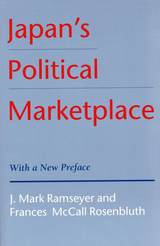
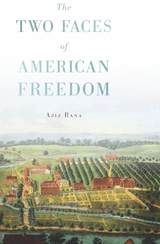
The Two Faces of American Freedom boldly reinterprets the American political tradition from the colonial period to modern times, placing issues of race relations, immigration, and presidentialism in the context of shifting notions of empire and citizenship. Today, while the U.S. enjoys tremendous military and economic power, citizens are increasingly insulated from everyday decision-making. This was not always the case. America, Aziz Rana argues, began as a settler society grounded in an ideal of freedom as the exercise of continuous self-rule—one that joined direct political participation with economic independence. However, this vision of freedom was politically bound to the subordination of marginalized groups, especially slaves, Native Americans, and women. These practices of liberty and exclusion were not separate currents, but rather two sides of the same coin.
However, at crucial moments, social movements sought to imagine freedom without either subordination or empire. By the mid-twentieth century, these efforts failed, resulting in the rise of hierarchical state and corporate institutions. This new framework presented national and economic security as society’s guiding commitments and nurtured a continual extension of America’s global reach. Rana envisions a democratic society that revives settler ideals, but combines them with meaningful inclusion for those currently at the margins of American life.

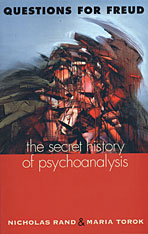
With all the intrigue and twists of a mystery, Questions for Freud uncovers the paradoxes that riddle psychoanalysis today and traces them to Freud's vacillation at key points in his work--and from there to a traumatic event in Freud's life.
What role did censored family history play in shaping Freud's psychological inquiries, promoting and impeding them by turns? With this question in mind, Nicholas Rand and Maria Torok develop a new biographical and conceptual approach to psychoanalysis, one that outlines Freud's contradictory theories of mental functioning against the backdrop of his permanent lack of insight into crucial and traumatic aspects of his immediate family's life. Taking us through previously unpublished documents and Freud's dreams, his clinical work and institutional organization, the authors show how a shameful event in 1865 that shook Freud and his family can help explain the internal clashes that later beset his work--on the origins of neurosis, reality, trauma, fantasy, sexual repression, the psychoanalytic study of literature, and dream interpretation.
Steeped in the history, theory, and practice of psychoanalysis, this book offers a guide to the wary, a way of understanding the flaws and contradictions of Freud's thought without losing sight of its significance. This book will alter the terms of the current debate about the standing of psychoanalysis and Freud.

An incomparable guide to the thousands of characters, from humble artisan to lofty genius, who people the unfolding history of music, this volume brings together all the pertinent biographical information about composers, performers, music theorists, and instrument makers from the days of praise chants to the bop and pop of today. A long-awaited companion to The Harvard Dictionary of Music, and compiled with the same meticulous scholarship and delight in detail, this biographical dictionary emphasizes classical and art music, but also gives ample attention to jazz and blues, rock and pop, and hymns and show tunes across the ages—with unusual care devoted to coverage of the twentieth century.
That the Belgian composer Jean Absil was professor of fugue at the Brussels Conservatory is a little-known fact. And few are aware that Roy Acuff began his country-and-western career in medicine shows. The writings of the seventeenth-century organist Jakob Adlung may be obscure, while Theodor Adorno’s are widely read and studied. But they can all be found in the As, along with 218 more entries, from Herb Alpert and the Andrews Sisters to Carl Friedrich Abel and Emanuel Ax. And this is only the beginning.
Here then is the information you need about 5,500 figures in the world of music—the major, the minor, the famous, the nearly forgotten, from Bach and Beethoven to Irving Berlin, Benny Goodman, and Bruce Springsteen—capsule summaries of the lives and careers behind the music enjoyed in every era. The volume is enlivened with illustrations, some revelations in themselves. A compendium that no music lover should be without, this rich volume, along with The Harvard Dictionary of Music, constitutes the standard reference work for the musically inclined, the curious, the informed, and the expert.
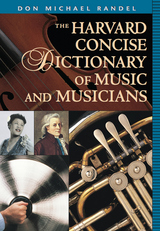
This new compact guide to the history and performance of music is both authoritative and a pleasure to use. With entries drawn and condensed from the widely acclaimed The New Harvard Dictionary of Music and its companion The Harvard Biographical Dictionary of Music, it is a dependable reference for home and classroom and for professional and amateur musicians.
This concise dictionary offers definitions of musical terms; succinct characterizations of the various forms of musical composition; entries that identify individual operas, oratorios, symphonic poems, and other works; illustrated descriptions of instruments; and capsule summaries of the lives and careers of composers, performers, and theorists. Like its distinguished parent volumes, The Harvard Concise Dictionary of Music and Musicians provides information on all periods in music history, with particularly comprehensive coverage of the twentieth century.
Clearly written and based on vast expertise, The Harvard Concise Dictionary of Music and Musicians is an invaluable handbook for everyone who cares about music.
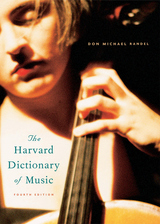
This classic reference work, the best one-volume music dictionary available, has been brought completely up to date in this new edition. Combining authoritative scholarship and lucid, lively prose, the Fourth Edition of The Harvard Dictionary of Music is the essential guide for musicians, students, and everyone who appreciates music.
The Harvard Dictionary of Music has long been admired for its wide range as well as its reliability. This treasure trove includes entries on all the styles and forms in Western music; comprehensive articles on the music of Africa, Asia, Latin America, and the Near East; descriptions of instruments enriched by historical background; and articles that reflect today’s beat, including popular music, jazz, and rock. Throughout this Fourth Edition, existing articles have been fine-tuned and new entries added so that the dictionary fully reflects current music scholarship and recent developments in musical culture.
Encyclopedia-length articles by notable experts alternate with short entries for quick reference, including definitions and identifications of works and instruments. More than 220 drawings and 250 musical examples enhance the text. This is an invaluable book that no music lover can afford to be without.

THIS EDITION HAS BEEN REPLACED BY A NEWER 2003 EDITION.
This classic reference work is simply the best one-volume music dictionary available today. Its nearly 6,000 entries, written by more than 70 top musicologists, are consistently lucid and based on recent scholarship. The New Harvard Dictionary of Music contains among its riches superb articles on music of the 20th century, including jazz, rock, and mixed media as well as twelve-tone, serial, and aleatory music; comprehensive articles on the music of Africa, Asia, Latin America, and the Near East; entries on all the styles and forms in Western art music; and descriptions of instruments enriched by historical background. Short entries for quick reference--definitions and identifications--alternate with encyclopedia-length articles written by experts in each field. More than 220 drawings and 250 musical examples enhance the text.
Combining authoritative scholarship with concise, lively prose, The New Harvard Dictionary of Music is the essential guide for musicians, students, and everyone who listens to music.
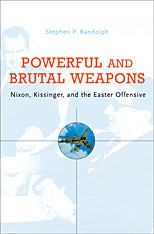
As America confronts an unpredictable war in Iraq, Stephen Randolph returns to an earlier conflict that severely tested our civilian and military leaders. In 1972, America sought to withdraw from Vietnam with its credibility intact. As diplomatic negotiations were pursued in Paris, President Richard Nixon and National Security Advisor Henry Kissinger hoped that gains on the battlefield would strengthen their position at the negotiating table--working against the relentless deadline of a presidential election year.
In retaliation for a major North Vietnamese offensive breaking over the Easter holidays, the President launched the all-out air campaign known as Linebacker--overriding his Secretary of Defense and clashing with the theater commander in whom he had lost all confidence. He intended to destroy the enemy with the full force of America's "powerful and brutal weapons" and thus shape the endgame of the war. Randolph's narrative, based not only on the Nixon White House tapes and newly declassified materials from the National Security Council, the Pentagon, and the White House but also on never before used North Vietnamese sources, re-creates how North Vietnam planned and fought this battle from Hanoi and how the U.S. planned and fought it from Washington.
Randolph's intimate chronicle of Nixon's performance as commander-in-chief gains us unprecedented access to how strategic assessments were made, transmitted through the field of command, and played out in combat and at the negotiating table. It is a compelling story about America's military decision-making in conflicts with nontraditional belligerents that speaks provocatively to our own time.
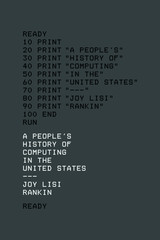
Silicon Valley gets all the credit for digital creativity, but this account of the pre-PC world, when computing meant more than using mature consumer technology, challenges that triumphalism.
The invention of the personal computer liberated users from corporate mainframes and brought computing into homes. But throughout the 1960s and 1970s a diverse group of teachers and students working together on academic computing systems conducted many of the activities we now recognize as personal and social computing. Their networks were centered in New Hampshire, Minnesota, and Illinois, but they connected far-flung users. Joy Rankin draws on detailed records to explore how users exchanged messages, programmed music and poems, fostered communities, and developed computer games like The Oregon Trail. These unsung pioneers helped shape our digital world, just as much as the inventors, garage hobbyists, and eccentric billionaires of Palo Alto.
By imagining computing as an interactive commons, the early denizens of the digital realm seeded today’s debate about whether the internet should be a public utility and laid the groundwork for the concept of net neutrality. Rankin offers a radical precedent for a more democratic digital culture, and new models for the next generation of activists, educators, coders, and makers.

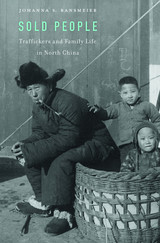
A robust trade in human lives thrived throughout North China during the late Qing and Republican periods. Whether to acquire servants, slaves, concubines, or children—or dispose of unwanted household members—families at all levels of society addressed various domestic needs by participating in this market. Sold People brings into focus the complicit dynamic of human trafficking, including the social and legal networks that sustained it. Johanna Ransmeier reveals the extent to which the structure of the Chinese family not only influenced but encouraged the buying and selling of men, women, and children.
For centuries, human trafficking had an ambiguous status in Chinese society. Prohibited in principle during the Qing period, it was nevertheless widely accepted as part of family life, despite the frequent involvement of criminals. In 1910, Qing reformers, hoping to usher China into the community of modern nations, officially abolished the trade. But police and other judicial officials found the new law extremely difficult to enforce. Industrialization, urbanization, and the development of modern transportation systems created a breeding ground for continued commerce in people. The Republican government that came to power after the 1911 revolution similarly struggled to root out the entrenched practice.
Ransmeier draws from untapped archival sources to recreate the lived experience of human trafficking in turn-of-the-century North China. Not always a measure of last resort reserved for times of extreme hardship, the sale of people was a commonplace transaction that built and restructured families as often as it broke them apart.

On January 13, 1953, the official press agency Tass announced the arrest of a group of "killer doctors" who were systematically doing away with prominent public figures in the Soviet Union. Nine doctors, six of them Jews, were cited, and in the next few weeks many more were carted off to the dread prisons of Lubyanka and Lefortovo. Among them was Yakov Lvovich Rapoport, a distinguished pathologist; this book is a firsthand memoir of his imprisonment, revealing not only the suffering caused by a fabricated "plot" but also the devastating climate of antisemitism and the appalling disarray of medicine and science in the Stalinist era.
Rapoport outlines the background of the infamous incident: arrests of prominent physicians had begun in 1952 and created hysteria throughout the country. Clinics were empty, patients refused professional medical advice, rumors abounded of poisoned medicines in pharmacies and murdered infants in maternity wards. Public opinion was primed to accept the Doctors' Plot, and to this day no one knows how many hundreds or thousands of doctors, prominent and ordinary, were victimized. Rapoport himself was arrested in early February, and he recalls in meticulous detail the psychological and physical pain he endured, all the while steadfastly denying that there was any conspiracy. He was saved from certain execution only by the death of Stalin.
The Doctors' Plot of 1953 is the gripping story of a brave man that gives a dismal picture of what life—especially for intellectuals and for Jews—was like in the Soviet Union under the paranoid Stalin. There is much information on the distortion of biology by Lysenko, the demagogic elevation of such charlatans as Olga Lepeshinskaya, the fictitious murder of Gorky and the quite likely murder of Frunze, and other mind-boggling examples of the surrealistic politics of Soviet science.
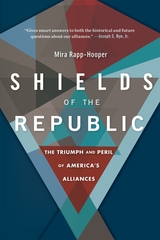
Is America’s alliance system so quietly effective that politicians and voters fail to appreciate its importance in delivering the security they take for granted?
For the first century and a half of its existence, the United States had just one alliance—a valuable but highly controversial military arrangement with France. Largely out of deference to George Washington’s warnings against the dangers of “entangling alliances,” subsequent American presidents did not consider entering another until the Second World War. Then everything suddenly changed. Between 1948 and 1955, US leaders extended defensive security guarantees to twenty-three countries in Europe and Asia. Seventy years later, the United States had allied with thirty-seven.
In Shields of the Republic, Mira Rapp-Hooper reveals the remarkable success of America’s unprecedented system of alliances. During the Cold War, a grand strategy focused on allied defense, deterrence, and assurance helped to keep the peace at far lower material and political costs than its critics allege. When the Soviet Union collapsed, however, the United States lost the adversary the system was designed to combat. Its alliances remained without a core strategic logic, leaving them newly vulnerable.
Today the alliance system is threatened from without and within. China and Russia seek to break America’s alliances through conflict and non-military erosion. Meanwhile, US politicians and voters are increasingly skeptical of alliances’ costs and benefits and believe we may be better off without them. But what if the alliance system is a victim of its own quiet success? Rapp-Hooper argues that America’s national security requires alliances that deter and defend against military and non-military conflict alike. The alliance system is past due for a post–Cold War overhaul, but it remains critical to the country’s safety and prosperity in the 21st century.

“Rapp-Hooper takes on directly and convincingly the Trumpian critique that alliances are not worth the investment and have led the nation to fight other people’s battles for them…Her deep erudition, crisp prose style, and innate brilliance shine through on most every page.”
—Boston Review
“The threat of COVID-19 has bolstered her argument, making plain both the importance of the alliance system and the imperative to adapt alliances to new ends.”
—Foreign Policy
“Musters rock-solid evidence to demonstrate what policymakers have long believed: that America’s alliances are a remarkably effective foreign policy tool.”
—Stephen Hadley, former National Security Advisor
“Argues persuasively that the complex alliance system instituted after the devastation of World War II has proven remarkably successful.”
—Kirkus Reviews
For the first 150 years of its existence, heeding George Washington’s warning about the dangers of “entangling alliances,” the United States had just one alliance—a valuable but highly controversial military arrangement with France. That changed dramatically with the Second World War. Between 1948 and 1955, the United States extended defensive security guarantees to twenty-three countries in Europe and Asia. Seventy years later, it is allied with thirty-seven countries.
Today the alliance system is threatened from without and within. China and Russia seek to break America’s alliances through conflict and non-military erosion, while US politicians and voters, skeptical of costs, believe we may be better off without them. But what if the alliance system is a victim of its own quiet success? Mira Rapp-Hooper argues that a grand strategy focused on allied defense, deterrence, and assurance helped to keep the peace throughout the Cold War and that the alliance system remains critical to America’s safety and prosperity in the twenty-first century.

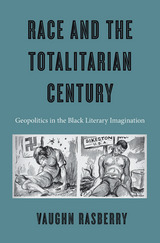
Few concepts evoke the twentieth century’s record of war, genocide, repression, and extremism more powerfully than the idea of totalitarianism. Today, studies of the subject are usually confined to discussions of Europe’s collapse in World War II or to comparisons between the Soviet Union and Nazi Germany. In Race and the Totalitarian Century, Vaughn Rasberry parts ways with both proponents and detractors of these normative conceptions in order to tell the strikingly different story of how black American writers manipulated the geopolitical rhetoric of their time.
During World War II and the Cold War, the United States government conscripted African Americans into the fight against Nazism and Stalinism. An array of black writers, however, deflected the appeals of liberalism and its antitotalitarian propaganda in the service of decolonization. Richard Wright, W. E. B. Du Bois, Shirley Graham, C. L. R. James, John A. Williams, and others remained skeptical that totalitarian servitude and democratic liberty stood in stark opposition. Their skepticism allowed them to formulate an independent perspective that reimagined the antifascist, anticommunist narrative through the lens of racial injustice, with the United States as a tyrannical force in the Third World but also as an ironic agent of Asian and African independence.
Bringing a new interpretation to events such as the Bandung Conference of 1955 and the Suez Canal Crisis of 1956, Rasberry’s bird’s-eye view of black culture and politics offers an alternative history of the totalitarian century.


Since the inception of the noh drama six centuries ago, actors have resisted the notion that noh rests on natural talent alone. Correct performance, they claim, demands adherence to traditions. Yet what constitutes noh’s traditions and who can claim authority over them have been in dispute throughout its history. This book traces how definitions of noh, both as an art and as a profession, have changed over time. The author seeks to show that the definition of noh as an art is inseparable from its definition as a profession.
The aim of this book is to describe how memories of the past become traditions, as well as the role of these traditions in the institutional development of the noh theater from its beginnings in the fourteenth century through the late twentieth century. It focuses on the development of the key traditions that constitute the “ethos of noh,” the ideology that empowered certain groups of actors at the expense of others, and how this ethos fostered noh’s professionalization—its growth from a loose occupation into a closed, regulated vocation. The author argues that the traditions that form the ethos of noh, such as those surrounding masks and manuscripts, are the key traits that define it as an art.
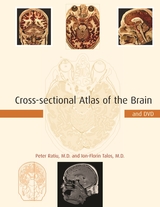
Cross-sectional Atlas of the Brain provides for the first time a set of high-resolution color cross-sections of the human brain (six times higher than that of the only complete data set available to date), each image accompanied by state-of-the-art MRI and CT scans of the same specimen. The sections were made at an interval of 147 micrometers of frozen tissue, virtually artifact free, with the blood vessels filled at sub-millimeter level. The more than two hundred detailed and fully annotated images in this atlas provide a complete body of reference to the gross anatomy of the brain. The accompanying line drawings of these images provide a roadmap for easy orientation.
The unparalleled resolution of the images also made it possible to derive cross-sections of the same specimen in all standard orientations--sagittal, coronal, and axial--through multi-planar computer-aided reformatting. This feature, which eliminates inter-subject variability, has never before been available in an anatomical atlas and makes the atlas especially useful for identifying and following anatomical structures in each plane. About the Companion DVD(View a sample in PDF format)
While the book itself contains 93 images (44 axial, 28 coronal, and 21 sagittal), the DVD contains the complete series of 1,481 axial images from one anatomic specimen from which the 44 axial images in the book were selected. These images were made at a resolution of 1525x1146 or 147 µm/pixel with a digital camera. The axial images are accompanied by 1,528 sagittal and 1,146 coronal images that were made by reformatting and reslicing the axial images. By placing these images side-by-side-by-side the DVD allows the user to see a particular region of the brain in all three orientations-axial, sagittal and coronal-simultaneously. These images are further accompanied by radiologic data. The DVD also allows the user to view a synchronized slide show of the images in all three planes. Images on the DVD that also appear in the book are highlighted with a blue background.
Cross-sectional Atlas of the Brain will be an essential reference for neuroscientists and clinicians (neurologists, radiologists, and neurosurgeons).


From the sixth to the fourth century B.C., the western Anatolian region of Lydia was home to a distinctive local tradition of ashlar masonry construction. The earliest datable example of fine stone masonry in the environs of Sardis, the capital of the Lydian empire, is the tomb of King Alyattes, who died in ca. 560 B.C. Contemporary monuments include a city gate and monumental terraces. Alyattes’ son Croesus was overthrown by the Persians in 547 B.C., but the Lydian building tradition survived in chamber tombs at Sardis and throughout Lydia.
This richly illustrated volume examines the monuments of Sardis and environs in the context of contemporary developments in Lydia and throughout the ancient Mediterranean and Near East. The study of Lydian architecture illuminates traditions of Anatolian kingship, technological exchange between Lydia and Greece and the Near East, and the origins of Persian imperial architecture.


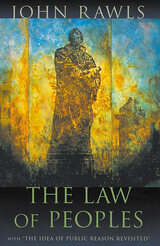
This book consists of two parts: “The Law of Peoples,” a major reworking of a much shorter article by the same name published in 1993, and the essay “The Idea of Public Reason Revisited,” first published in 1997. Taken together, they are the culmination of more than fifty years of reflection on liberalism and on some of the most pressing problems of our times by John Rawls.
“The Law of Peoples” extends the idea of a social contract to the Society of Peoples and lays out the general principles that can and should be accepted by both liberal and non-liberal societies as the standard for regulating their behavior toward one another. In particular, it draws a crucial distinction between basic human rights and the rights of each citizen of a liberal constitutional democracy. It explores the terms under which such a society may appropriately wage war against an “outlaw society” and discusses the moral grounds for rendering assistance to non-liberal societies burdened by unfavorable political and economic conditions.
“The Idea of Public Reason Revisited” explains why the constraints of public reason, a concept first discussed in Political Liberalism (1993), are ones that holders of both religious and non-religious comprehensive views can reasonably endorse. It is Rawls’s most detailed account of how a modern constitutional democracy, based on a liberal political conception, could and would be viewed as legitimate by reasonable citizens who on religious, philosophical, or moral grounds do not themselves accept a liberal comprehensive doctrine—such as that of Kant, or Mill, or Rawls’s own “Justice as Fairness,” presented in A Theory of Justice (1971).
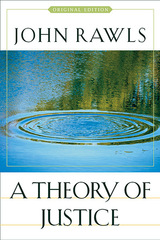
John Rawls aims to express an essential part of the common core of the democratic tradition—justice as fairness—and to provide an alternative to utilitarianism, which had dominated the Anglo-Saxon tradition of political thought since the nineteenth century. Rawls substitutes the ideal of the social contract as a more satisfactory account of the basic rights and liberties of citizens as free and equal persons. “Each person,” writes Rawls, “possesses an inviolability founded on justice that even the welfare of society as a whole cannot override.” Advancing the ideas of Rousseau, Kant, Emerson, and Lincoln, Rawls’s theory is as powerful today as it was when first published.
Though the revised edition of A Theory of Justice, published in 1999, is the definitive statement of Rawls’s view, much of the extensive literature on his theory refers to the original. This first edition is available for scholars and serious students of Rawls’s work.
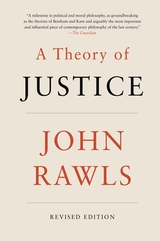
Since it appeared in 1971, John Rawls's A Theory of Justice has become a classic. The author has now revised the original edition to clear up a number of difficulties he and others have found in the original book.
Rawls aims to express an essential part of the common core of the democratic tradition--justice as fairness--and to provide an alternative to utilitarianism, which had dominated the Anglo-Saxon tradition of political thought since the nineteenth century. Rawls substitutes the ideal of the social contract as a more satisfactory account of the basic rights and liberties of citizens as free and equal persons. "Each person," writes Rawls, "possesses an inviolability founded on justice that even the welfare of society as a whole cannot override." Advancing the ideas of Rousseau, Kant, Emerson, and Lincoln, Rawls's theory is as powerful today as it was when first published.
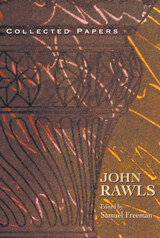
John Rawls’s work on justice has drawn more commentary and aroused wider attention than any other work in moral or political philosophy in the twentieth century. Rawls is the author of two major treatises, A Theory of Justice (1971) and Political Liberalism (1993); it is said that A Theory of Justice revived political philosophy in the English-speaking world.
But before and after writing his great treatises Rawls produced a steady stream of essays. Some of these essays articulate views of justice and liberalism distinct from those found in the two books. They are important in and of themselves because of the deep issues about the nature of justice, moral reasoning, and liberalism they raise as well as for the light they shed on the evolution of Rawls’s views. Some of the articles tackle issues not addressed in either book. They help identify some of the paths open to liberal theorists of justice and some of the knotty problems which liberal theorists must seek to resolve.
A complete collection of John Rawls’s essays is long overdue.
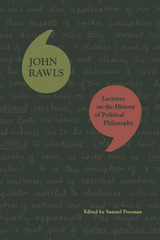
This last book by the late John Rawls, derived from written lectures and notes for his long-running course on modern political philosophy, offers readers an account of the liberal political tradition from a scholar viewed by many as the greatest contemporary exponent of the philosophy behind that tradition.
Rawls's goal in the lectures was, he wrote, "to identify the more central features of liberalism as expressing a political conception of justice when liberalism is viewed from within the tradition of democratic constitutionalism." He does this by looking at several strands that make up the liberal and democratic constitutional traditions, and at the historical figures who best represent these strands--among them the contractarians Hobbes, Locke, and Rousseau; the utilitarians Hume, Sidgwick, and J. S. Mill; and Marx regarded as a critic of liberalism. Rawls's lectures on Bishop Joseph Butler also are included in an appendix. Constantly revised and refined over three decades, Rawls's lectures on these figures reflect his developing and changing views on the history of liberalism and democracy--as well as how he saw his own work in relation to those traditions.
With its clear and careful analyses of the doctrine of the social contract, utilitarianism, and socialism--and of their most influential proponents--this volume has a critical place in the traditions it expounds. Marked by Rawls's characteristic patience and curiosity, and scrupulously edited by his student and teaching assistant, Samuel Freeman, these lectures are a fitting final addition to his oeuvre, and to the history of political philosophy as well.
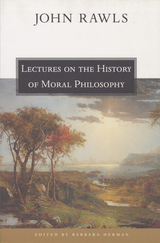
The premier political philosopher of his day, John Rawls, in three decades of teaching at Harvard, has had a profound influence on the way philosophical ethics is approached and understood today. This book brings together the lectures that inspired a generation of students--and a regeneration of moral philosophy. It invites readers to learn from the most noted exemplars of modern moral philosophy with the inspired guidance of one of contemporary philosophy's most noteworthy practitioners and teachers.
Central to Rawls's approach is the idea that respectful attention to the great texts of our tradition can lead to a fruitful exchange of ideas across the centuries. In this spirit, his book engages thinkers such as Leibniz, Hume, Kant, and Hegel as they struggle in brilliant and instructive ways to define the role of a moral conception in human life. The lectures delineate four basic types of moral reasoning: perfectionism, utilitarianism, intuitionism, and--the ultimate focus of Rawls's course--Kantian constructivism. Comprising a superb course on the history of moral philosophy, they also afford unique insight into how John Rawls has transformed our view of this history.

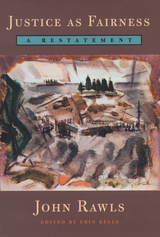
This book originated as lectures for a course on political philosophy that Rawls taught regularly at Harvard in the 1980s. In time the lectures became a restatement of his theory of justice as fairness, revised in light of his more recent papers and his treatise Political Liberalism (1993). As Rawls writes in the preface, the restatement presents "in one place an account of justice as fairness as I now see it, drawing on all [my previous] works." He offers a broad overview of his main lines of thought and also explores specific issues never before addressed in any of his writings.
Rawls is well aware that since the publication of A Theory of Justice in 1971, American society has moved farther away from the idea of justice as fairness. Yet his ideas retain their power and relevance to debates in a pluralistic society about the meaning and theoretical viability of liberalism. This book demonstrates that moral clarity can be achieved even when a collective commitment to justice is uncertain.
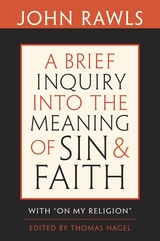
John Rawls never published anything about his own religious beliefs, but after his death two texts were discovered which shed extraordinary light on the subject. A Brief Inquiry into the Meaning of Sin and Faith is Rawls’s undergraduate senior thesis, submitted in December 1942, just before he entered the army. At that time Rawls was deeply religious; the thesis is a significant work of theological ethics, of interest both in itself and because of its relation to his mature writings. “On My Religion,” a short statement drafted in 1997, describes the history of his religious beliefs and attitudes toward religion, including his abandonment of orthodoxy during World War II.
The present volume includes these two texts, together with an Introduction by Joshua Cohen and Thomas Nagel, which discusses their relation to Rawls’s published work, and an essay by Robert Merrihew Adams, which places the thesis in its theological context.
The texts display the profound engagement with religion that forms the background of Rawls’s later views on the importance of separating religion and politics. Moreover, the moral and social convictions that the thesis expresses in religious form are related in illuminating ways to the central ideas of Rawls’s later writings. His notions of sin, faith, and community are simultaneously moral and theological, and prefigure the moral outlook found in Theory of Justice.

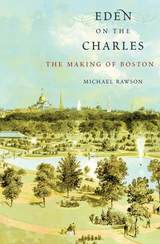
Drinking a glass of tap water, strolling in a park, hopping a train for the suburbs: some aspects of city life are so familiar that we don’t think twice about them. But such simple actions are structured by complex relationships with our natural world. The contours of these relationships—social, cultural, political, economic, and legal—were established during America’s first great period of urbanization in the nineteenth century, and Boston, one of the earliest cities in America, often led the nation in designing them. A richly textured cultural and social history of the development of nineteenth-century Boston, this book provides a new environmental perspective on the creation of America’s first cities.
Eden on the Charles explores how Bostonians channeled country lakes through miles of pipeline to provide clean water; dredged the ocean to deepen the harbor; filled tidal flats and covered the peninsula with houses, shops, and factories; and created a metropolitan system of parks and greenways, facilitating the conversion of fields into suburbs. The book shows how, in Boston, different class and ethnic groups brought rival ideas of nature and competing visions of a “city upon a hill” to the process of urbanization—and were forced to conform their goals to the realities of Boston’s distinctive natural setting. The outcomes of their battles for control over the city’s development were ultimately recorded in the very fabric of Boston itself. In Boston’s history, we find the seeds of the environmental relationships that—for better or worse—have defined urban America to this day.

The first English translation of the narrative poem that is widely recognized as one of treasures of pre-modern Bengali culture.
In 1752, the Bengali poet Bharatchandra Ray completed a long narrative poem dedicated to the glory of Annada, the consort of Shiva and the divinity who, as her name proclaims, “bestows the bounty of rice.”
A poet well-versed in Sanskrit, Persian, and Hindi—all of which enrich his work—Bharatchandra took up the literary performance genre maṅgalkāvya and thoroughly transformed it, addressing the aesthetic tastes of the court rather than those of the traditional village audience. He added depth and sensitivity to well-known legends, along with allusions to his own experiences of poverty, and more than a dash of mischievous wit.
The second volume recounts the clandestine love affair of Princess Vidya and Prince Sundar, and how Bhavananda, ancestor of the poet’s patron, stopped a rebellion and became a king.
This translation, the first in English, features the original text in the Bangla script. Lively and entertaining, In Praise of Annada was regarded as a major achievement in its own time and is now counted one of the treasures of Bengali literature.

The first English translation of the narrative poem that is widely recognized as one of treasures of pre-modern Bengali culture.
In 1752, the Bengali poet Bharatchandra Ray completed a long narrative poem dedicated to the glory of Annada, Shiva’s consort and the divinity who, as her name proclaims, “bestows the bounty of rice.”
A poet well versed in Sanskrit, Persian, and Hindi—all of which enrich his work—Bharatchandra took up the literary performance genre maṅgalkāvya and thoroughly transformed it, addressing the aesthetic tastes of the court rather than of the traditional village audience. He added depth and sensitivity to well-known legends, along with allusions to his own experiences of poverty, and more than a dash of mischievous wit. The first volume narrates Annada’s origins, including the building of her city and temple under Shiva’s direction and the spread of her worship, and incorporates praise of the poet’s patron, the Nadia royal family.
This translation, the first into English, accompanies the original text in the Bangla script. Lively and entertaining, In Praise of Annada was regarded as a major achievement in its own time and remains a treasure of Bengali literature.
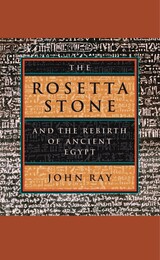
The Rosetta Stone is one of the world’s great wonders, attracting awed pilgrims by the tens of thousands each year. This book tells the Stone’s story, from its discovery by Napoleon’s expedition to Egypt to its current—and controversial—status as the single most visited object on display in the British Museum.
A pharaoh’s forgotten decree, cut in granite in three scripts—Egyptian hieroglyphs, Egyptian demotic, and ancient Greek—the Rosetta Stone promised to unlock the door to the language of ancient Egypt and its 3,000 years of civilization, if only it could be deciphered. Capturing the drama of the race to decode this key to the ancient past, John Ray traces the paths pursued by the British polymath Thomas Young and Jean-François Champollion, the “father of Egyptology” ultimately credited with deciphering Egyptian hieroglyphs. He shows how Champollion “broke the code” and explains more generally how such deciphering is done, as well as its critical role in the history of Egyptology. Concluding with a chapter on the political and cultural controversy surrounding the Stone, the book also includes an appendix with a full translation of the Stone’s text.
Rich in anecdote and curious lore, The Rosetta Stone and the Rebirth of Ancient Egypt is a brilliant and frequently amusing guide to one of history’s great mysteries and marvels.
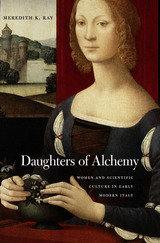
The era of the Scientific Revolution has long been epitomized by Galileo. Yet many women were at its vanguard, deeply invested in empirical culture. They experimented with medicine and practical alchemy at home, at court, and through collaborative networks of practitioners. In academies, salons, and correspondence, they debated cosmological discoveries; in their literary production, they used their knowledge of natural philosophy to argue for their intellectual equality to men.
Meredith Ray restores the work of these women to our understanding of early modern scientific culture. Her study begins with Caterina Sforza’s alchemical recipes; examines the sixteenth-century vogue for “books of secrets”; and looks at narratives of science in works by Moderata Fonte and Lucrezia Marinella. It concludes with Camilla Erculiani’s letters on natural philosophy and, finally, Margherita Sarrocchi’s defense of Galileo’s “Medicean” stars.
Combining literary and cultural analysis, Daughters of Alchemy contributes to the emerging scholarship on the variegated nature of scientific practice in the early modern era. Drawing on a range of under-studied material including new analyses of the Sarrocchi–Galileo correspondence and a previously unavailable manuscript of Sforza’s Experimenti, Ray’s book rethinks early modern science, properly reintroducing the integral and essential work of women.

Here is a mystery: in 1939, when the Hollywood Studio System, at the peak of its power, produced such films as Gone with the Wind, Ninotchka, Stagecoach, The Wizard of Oz, Mr. Smith Goes to Washington, and Wuthering Heights, the movies' number-one box-office attraction was not Gable, Garbo, Wayne, Garland, Stewart, or Olivier. In 1939, 1940, and 1941, the most popular performer in the American cinema was Mickey Rooney, who owed his success primarily to a low-budget MGM series that concentrated on his character, Andy Hardy.
Here is another mystery: at some point in the past decade, film studies, once the most innovative of the humanities disciplines, began to harden into a catechism of predictable questions and answers. By committing itself exclusively to rational critique, film studies left itself overmatched by the enormously popular, seductive, and enigmatic representations that constitute the movies. And by eschewing experimentation with the forms of criticism, film studies ironically cut itself off from the new methods of research and writing prompted by the twentieth century's revolution in communications technologies.
Robert Ray's book about Andy Hardy proposes that alternative ways of thinking and writing about the movies can be derived from the humanities' equivalent of science's pure research--the avant-garde arts. Drawing on the Surrealist tradition, with its use of games, chance, fragments, anecdotes, and collage, Ray invents for film studies new forms of research that imitate the cognitive habits encouraged by photography, computers, and the cinema itself. In doing so, he reveals that even the Andy Hardy movies, a routine product of the Hollywood Studio System, were, after all, rich and mysterious.

Gaze toward the Nile from the desert hills of Mukattam, and the vast city of Cairo unfolds before you, with its monumental architecture, teeming populace, and thousands of years of rich history. The extraordinary tapestry of Cairo's past and present comes vividly to life in this magisterial study by André Raymond, arguably the premier social historian of the Arab world. The most deeply observed and historically nuanced account ever given of the greatest Arab city of northern Africa, this book shows us Cairo from the glimmer of its beginnings in the Arab conquest of Egypt in 640 through its transformation into the modern center of Middle Eastern life today.Here are the Fatimids, the Mamluks, and the Ottomans, the invasions, dynastic changes, and religious conflicts that one after another altered and shaped Cairo's destiny. And here, alongside rulers and religious leaders, are the merchants and artisans who have given Cairene life its distinctive character over time. Raymond depicts life in Cairo through the centuries, chronicling the coming of European influence, the vagaries of social evolution, and the development of economic structure and urban design. His work reflects all facets of Cairo's historical and social reality, weaving commerce, politics, religion, and culture into a finely worked portrait of the foremost Arab city on the continent of Africa.
With its splendid illustrations and maps and its meticulous attention to the topography and archaeology of the city, this book will prove as valuable to the serious traveler as to observers of Middle Eastern history and society. It stands as the definitive work on Cairo, unparalleled in scope, depth, and detail.

No single symposium or volume could do justice to the amount of information now available on Ecuadorian prehistory. This volume and the symposium on which it was based are devoted, therefore, to the archaeology of Formative Ecuador in order to bring new information on one of the most important periods of the region’s past to the attention of New World scholars.
While the volume includes two chapters on ideology and iconography, the focus is distinctly archaeological, with an emphasis on the fundamentals of archaeological science, including settlement patterns, subsistence, health, and ceramic variability.



From 1980 to 1988, Iran and Iraq fought the longest conventional war of the twentieth century. The tragedies included the slaughter of child soldiers, the use of chemical weapons, the striking of civilian shipping in the Gulf, and the destruction of cities. The Iran-Iraq War offers an unflinching look at a conflict seared into the region’s collective memory but little understood in the West. Pierre Razoux shows why this war remains central to understanding Middle Eastern geopolitics, from the deep-rooted distrust between Sunni and Shia Muslims, to Iran’s obsession with nuclear power, to the continuing struggles in Iraq. He provides invaluable keys to decipher Iran’s behavior and internal struggle today.
Razoux’s account is based on unpublished military archives, oral histories, and interviews, as well as audio recordings seized by the U.S. Army detailing Saddam Hussein’s debates with his generals. Tracing the war’s shifting strategies and political dynamics—military operations, the jockeying of opposition forces within each regime, the impact on oil production so essential to both countries—Razoux also looks at the international picture. From the United States and Soviet Union to Israel, Europe, China, and the Arab powers, many nations meddled in this conflict, supporting one side or the other and sometimes switching allegiances.
The Iran-Iraq War answers questions that have puzzled historians. Why did Saddam embark on this expensive, ultimately fruitless conflict? Why did the war last eight years when it could have ended in months? Who, if anyone, was the true winner when so much was lost?

For almost three centuries, until 612 B.C., the small kingdom of Assyria dominated the Middle East, its empire at one point extending from Iran to Egypt. The story of those years--the triumphs of the Assyrian kings in war and peace, their exploits in the hunting field, and the gods who watched over them--were recorded in stone on the walls of a succession of royal palaces. These sculptures, offering eyewitness views of a long-lost civilization, were not rediscovered until the nineteenth century.
The finest collection, transported with great difficulty to Europe, is now preserved at the British Museum. This book describes how the sculptures were found and what they meant to those who created them. It is both a richly illustrated history of Assyrian sculpture in general and a guide to the outstanding collections of the British Museum. For this Second Edition of Assyrian Sculpture, in a new format, the author has updated the text and bibliography.

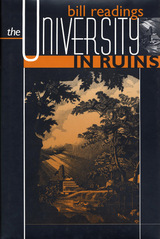
It is no longer clear what role the University plays in society. The structure of the contemporary University is changing rapidly, and we have yet to understand what precisely these changes will mean. Is a new age dawning for the University, the renaissance of higher education under way? Or is the University in the twilight of its social function, the demise of higher education fast approaching?We can answer such questions only if we look carefully at the different roles the University has played historically and then imagine how it might be possible to live, and to think, amid the ruins of the University. Tracing the roots of the modern American University in German philosophy and in the work of British thinkers such as Newman and Arnold, Bill Readings argues that historically the integrity of the modern University has been linked to the nation-state, which it has served by promoting and protecting the idea of a national culture. But now the nation-state is in decline, and national culture no longer needs to be either promoted or protected. Increasingly, universities are turning into transnational corporations, and the idea of culture is being replaced by the discourse of "excellence." On the surface, this does not seem particularly pernicious.
The author cautions, however, that we should not embrace this techno-bureaucratic appeal too quickly. The new University of Excellence is a corporation driven by market forces, and, as such, is more interested in profit margins than in thought. Readings urges us to imagine how to think, without concession to corporate excellence or recourse to romantic nostalgia within an institution in ruins. The result is a passionate appeal for a new community of thinkers.

From 1949 to 1978, communist elites held clashing visions of China’s economic development. Mao Zedong advocated the “first way” of semi-autarchy characteristic of revolutionary Stalinism (1929–34), while Zhou Enlai adapted bureaucratic Stalinism (1934–53) to promote the “second way” of import substitution industrialization. A Third Way tells the story of Deng Xiaoping’s experimentation with export-led development inspired by Lenin’s New Economic Policy and the economic reforms of Eastern Europe and Asia.
Having uncovered an extraordinary collection of internal party and government documents, Lawrence Reardon meticulously traces the evolution of the coastal development strategy, starting with special economic zones in 1979 and evolving into the fourteen open coastal cities, the Hainan SEZ, and eventual accession to the global trade regime in 2001. Reardon details how Deng and Zhao Ziyang tackled large-scale smuggling operations, compromised with Chen Yun’s conservative views, and overcame Deng Liqun’s ideological opposition. Although Zhao Ziyang was airbrushed out of official Chinese history after June 4, 1989, Reardon argues that Zhao was the true architect of China’s opening strategy. A Third Way provides important new insights about the crucial period of the 1980s and how it paved the way for China’s transformation into a global economic superpower.

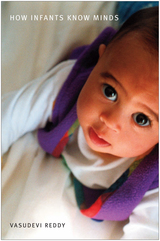
Most psychologists claim that we begin to develop a “theory of mind”—some basic ideas about other people’s minds—at age two or three, by inference, deduction, and logical reasoning.
But does this mean that small babies are unaware of minds? That they see other people simply as another (rather dynamic and noisy) kind of object? This is a common view in developmental psychology. Yet, as this book explains, there is compelling evidence that babies in the first year of life can tease, pretend, feel self-conscious, and joke with people. Using observations from infants’ everyday interactions with their families, Vasudevi Reddy argues that such early emotional engagements show infants’ growing awareness of other people’s attention, expectations, and intentions.
Reddy deals with the persistent problem of “other minds” by proposing a “second-person” solution: we know other minds if we can respond to them. And we respond most richly in engagement with them. She challenges psychology’s traditional “detached” stance toward understanding people, arguing that the most fundamental way of knowing minds—both for babies and for adults—is through engagement with them. According to this argument the starting point for understanding other minds is not isolation and ignorance but emotional relation.

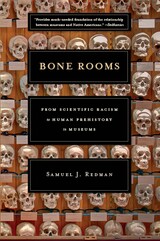
A Smithsonian Book of the Year
A Nature Book of the Year
“Provides much-needed foundation of the relationship between museums and Native Americans.”
—Smithsonian
In 1864 a US Army doctor dug up the remains of a Dakota man who had been killed in Minnesota and sent the skeleton to a museum in Washington that was collecting human remains for research. In the “bone rooms” of the Smithsonian, a scientific revolution was unfolding that would change our understanding of the human body, race, and prehistory.
Seeking evidence to support new theories of racial classification, collectors embarked on a global competition to recover the best specimens of skeletons, mummies, and fossils. As the study of these discoveries discredited racial theory, new ideas emerging in the budding field of anthropology displaced race as the main motive for building bone rooms. Today, as a new generation seeks to learn about the indigenous past, momentum is building to return objects of spiritual significance to native peoples.
“A beautifully written, meticulously documented analysis of [this] little-known history.”
—Brian Fagan, Current World Archeology
“How did our museums become great storehouses of human remains? Bone Rooms chases answers…through shifting ideas about race, anatomy, anthropology, and archaeology and helps explain recent ethical standards for the collection and display of human dead.”
—Ann Fabian, author of The Skull Collectors
“Details the nascent views of racial science that evolved in U.S. natural history, anthropological, and medical museums…Redman effectively portrays the remarkable personalities behind [these debates]…pitting the prickly Aleš Hrdlička at the Smithsonian…against ally-turned-rival Franz Boas at the American Museum of Natural History.”
—David Hurst Thomas, Nature
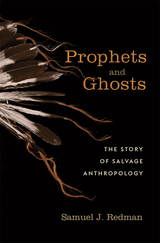
A searching account of nineteenth-century salvage anthropology, an effort to preserve the culture of “vanishing” Indigenous peoples through dispossession of the very communities it was meant to protect.
In the late nineteenth century, anthropologists, linguists, archaeologists, and other chroniclers began amassing Indigenous cultural objects—crafts, clothing, images, song recordings—by the millions. Convinced that Indigenous peoples were doomed to disappear, collectors donated these objects to museums and universities that would preserve and exhibit them. Samuel Redman dives into the archive to understand what the collectors deemed the tradition of the “vanishing Indian” and what we can learn from the complex legacy of salvage anthropology.
The salvage catalog betrays a vision of Native cultures clouded by racist assumptions—a vision that had lasting consequences. The collecting practice became an engine of the American museum and significantly shaped public education and preservation, as well as popular ideas about Indigenous cultures. Prophets and Ghosts teases out the moral challenges inherent in the salvage project. Preservationists successfully maintained an important human inheritance, sometimes through collaboration with Indigenous people, but collectors’ methods also included outright theft. The resulting portrait of Indigenous culture reinforced the public’s confidence in the hierarchies of superiority and inferiority invented by “scientific” racism.
Today the same salvaged objects are sources of invaluable knowledge for researchers and museum visitors. But the question of what should be done with such collections is nonetheless urgent. Redman interviews Indigenous artists and curators, who offer fresh perspectives on the history and impact of cultural salvage, pointing to new ideas on how we might contend with a challenging inheritance.

This book--first published in 1958, and designed for courses on abnormal psychology and psychiatry--is intended to supplement the usual textbook material in abnormal psychology. Papers have been selected to introduce the student to the active and complex enterprise of investigation and hypothesis in this wide field. Conflicting evidence and allegiances, riddles and ingenuity, are displayed in order to stimulate an appreciation of the task of discovery in behavioral science.
Five general areas are represented in the selections: (i) the problem of the effects of early experience on psychological development; (2) psychosomatic disorders and neurosis; (3) schizophrenic psychosis; (4) somatic factors in psychopathology; and (5) the social context and its effects on the phenomena of behavior. Against a background of systematic study, the graduate or undergraduate student will find in the forty-six papers included here an instructive sampling of the periodical literature.
Says Robert W. White in his introduction to the book: "There is no longer an air that the problem of schizophrenia, or of neurosis, or of psychosomatic disorder is going to be solved by a stroke of insight and a simple theory. Where once it was hoped to unlock the secret of a disorder, we now know that we must creep up slowly upon its many secrets and that we must use to the utmost the help provided by scientific method. In this new climate the present book is an indispensable teaching aid."

At a telling moment in the development of American East Asia policy, the dream of a Christian China, made vivid by the utterances of returned missionaries, fired the imagination of the general public, influenced opinion leaders and policymakers, and furthered the Open Door doctrine. Missionary-inspired enthusiasm for China ran parallel to the different attitude of the American business community, which viewed Japan as the more appropriate focus of American interest in East Asia.
During the five years here examined, the religious mentality proved stronger than the commercial mentality in influencing American policy toward the Chinese Republican Revolution and the Twenty-One Demands of 1915. James Reed’s treatment of the struggle between William Jennings Bryan and Robert Lansing over the Japanese demands in China is detailed and penetrating.
This book builds on the work of Akira Iriye, Michael Hunt, Ernest May, and others in its analysis of cultural attitudes, business affairs, and the mindset of the foreign policy elites. Its thesis—that the Protestant missionary movement profoundly shaped the course of our historical relations with East Asia—will interest both specialists and general readers.

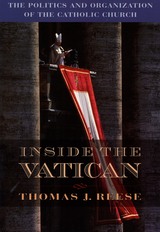
There are one billion Catholics in the world today, spread over every continent, speaking almost every conceivable language, and all answering to a single authority. The Vatican is a unique international organization, both in terms of its extraordinary power and influence, and in terms of its endurance. Popes come and go, but the elaborate and complex bureaucracy called the Vatican lives on. For centuries, it has served and sometimes undermined popes; it has been praised and blamed for the actions of the pope and for the state of the church. Yet an objective examination of the workings of the Vatican has been unavailable until now.
Drawing on more than a hundred interviews with Vatican officials, this book affords a firsthand look at the people, the politics, and the organization behind the institution. Reese brings remarkable clarity to the almost Byzantine bureaucracy of congregations, agencies, secretariats, tribunals, nunciature, and offices, showing how they serve the pope and, through him, the universal church. He gives a lively account of how popes are elected and bishops appointed, how dissident theologians are disciplined and civil authorities dealt with. Throughout, revealing and colorful anecdotes from church history and the present day bring the unique culture of the Vatican to life.
The Vatican is a fascinating institution, a model of continuity and adaptation, which remains constant while functioning powerfully in a changing world. As never before, this book provides a clear, objective perspective on how the enormously complex institution surrounding the papacy operates on a day-to-day level, how it has adapted and endured for close to two thousand years, and how it is likely to face the challenges of the next millennium.
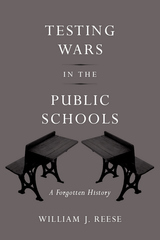
Written tests to evaluate students were a radical and controversial innovation when American educators began adopting them in the 1800s. Testing quickly became a key factor in the political battles during this period that gave birth to America's modern public school system. William J. Reese offers a richly detailed history of an educational revolution that has so far been only partially told.
Single-classroom schools were the norm throughout the United States at the turn of the nineteenth century. Pupils demonstrated their knowledge by rote recitation of lessons and were often assessed according to criteria of behavior and discipline having little to do with academics. Convinced of the inadequacy of this system, the reformer Horace Mann and allies on the Boston School Committee crafted America's first major written exam and administered it as a surprise in local schools in 1845. The embarrassingly poor results became front-page news and led to the first serious consideration of tests as a useful pedagogic tool and objective measure of student achievement.
A generation after Mann's experiment, testing had become widespread. Despite critics' ongoing claims that exams narrowed the curriculum, ruined children's health, and turned teachers into automatons, once tests took root in American schools their legitimacy was never seriously challenged. Testing Wars in the Public Schools puts contemporary battles over scholastic standards and benchmarks into perspective by showcasing the historic successes and limitations of the pencil-and-paper exam.
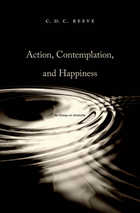
The notion of practical wisdom is one of Aristotle’s greatest inventions. It has inspired philosophers as diverse as Martin Heidegger, Hans-Georg Gadamer, Elizabeth Anscombe, Michael Thompson, and John McDowell. Now a leading scholar of ancient philosophy offers a challenge to received accounts of practical wisdom by situating it in the larger context of Aristotle’s views on knowledge and reality.
That happiness is the end pursued by practical wisdom is commonly agreed. What is disputed is whether happiness is to be found in the practical life of political action, in which we exhibit courage, temperance, and other virtues of character, or in the contemplative life, where theoretical wisdom is the essential virtue. C. D. C. Reeve argues that the dichotomy is bogus, that these lives are in fact parts of a single life, which is the best human one. In support of this view, he develops innovative accounts of many of the central notions in Aristotle’s metaphysics, epistemology, and psychology, including matter and form, scientific knowledge, dialectic, educatedness, perception, understanding, political science, practical truth, deliberation, and deliberate choice. These accounts are based directly on freshly translated passages from many of Aristotle’s writings. Action, Contemplation, and Happiness is an accessible essay not just on practical wisdom but on Aristotle’s philosophy as a whole.
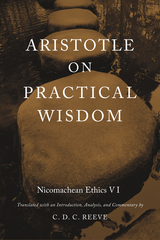
Nicomachean Ethics VI is considered one of classical philosophy’s greatest achievements. Aristotle on Practical Wisdom is the first full-scale commentary on this work to be issued in over a century, and is the most comprehensive and philosophically illuminating to date. A meticulous translation coupled with facing-page analysis enables readers to engage directly with the account of phronêsis or practical wisdom that Aristotle is developing, while a full introduction locates that account in the context of his ethical thought and of later ethical thought more generally. The commentary discusses the text line by line, illuminating obscure passages, explaining technical ones, and providing a new overall interpretation of the work and the nature of practical reason.
A companion volume, Action, Contemplation, and Happiness, expands on this interpretation to provide a startling new picture of Aristotle’s thought as a whole. Although the two books can be approached separately, together they constitute one of the most daring and original contemporary readings of Aristotle’s philosophy. Aimed at committed students of these notoriously difficult writings, C. D. C. Reeve’s engaging and lucid books should find a wide audience among philosophers, classicists, and all readers willing to wrestle with a thinker of unparalleled subtlety, depth, and scope.
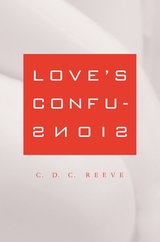
Love's confusions are legion. We promise to love, but we cannot love at will. Love God, we're commanded, but we cannot love on command. And given the vicissitudes of self-love, even if we could love our neighbors as we love ourselves, would it be a good thing to do so? These are a few of the paradoxes that typically lead philosophers to oversimplify love--and that draw C. D. C. Reeve to explore it in all its complexity, searching for the lessons to be found within love's confusions.
Ranging from Plato, who wrote so eloquently on the subject, to writers as diverse as Shakespeare, Proust, Forster, Beckett, Huxley, Lawrence, and Larkin, Reeve brings the vast resources of Western literature and philosophy to bear on the question of love. As he explores the origins of Western thought on the subject, he also turns to the origins of individual experience--the relationship of mother and child, the template of all possible permutations of love--and to the views of such theorists as Freud, Melanie Klein, and Carol Gilligan. At the same time, he uses the story of the prototypical absent father, Odysseus, to demonstrate the importance of reconciling a desire for tenderness with a desire for strength if we are to make the most of love's potentials.
Looking at love in light of the classical world and Christianity, and in its complex relationship with pornography, violence, sadomasochism, fantasy, sentimentality, and jealousy, Reeve invites us to think more broadly about love, and to find the confusions that inevitably result to be creative rather than disturbing.
READERS
Browse our collection.
PUBLISHERS
See BiblioVault's publisher services.
STUDENT SERVICES
Files for college accessibility offices.
UChicago Accessibility Resources
home | accessibility | search | about | contact us
BiblioVault ® 2001 - 2024
The University of Chicago Press









